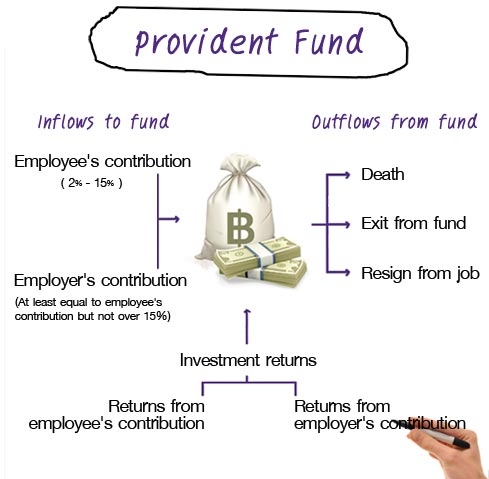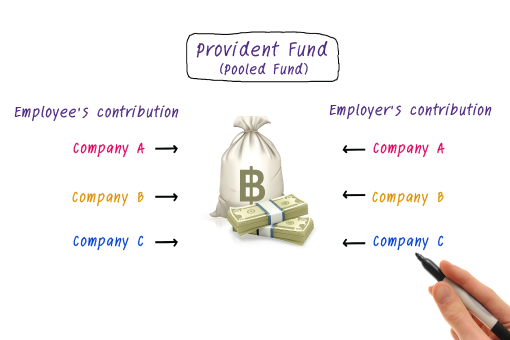It is right for all employers to have access to a provident fund.
What is a provident fund?
A provident fund is an investment fund that is jointly established by the employer and employee to serve as a long term savings to support an employee upon retirement. It also represents job welfare benefits offered to the employee.
Sources of money invested in the provident fund:
- Employee or member An amount will be deducted from the employee’s monthly salary; it’s called the “employee’s contribution.”
- Employer. The employer will contribute a portion into the fund each month, besides the usual salary payment made to the employer. This contribution in the fund is called the “employer’s contribution.”
Money placed in a provident fund will be managed by an investment management company which will invest that money in various securities to maximize the financial returns, given the level of risk that is acceptable or in accordance with a specified investment policy. The fund is a unique legal entity which is fully separated from the employer and the investment management company; it must also be registered with the Securities and Exchange Commission (SEC).
Employees or provident fund members can therefore be confident that if the employer or the investment management company becomes financially insolvent, the fund’s entire assets continue to belong to the employees or provident fund members and not affected by any liabilities the employer may have.
Employee’s contribution:
Employee’s contribution (portion by employee/member): the amount of money that the member contributes into the fund will be deducted from the monthly salary at between 2-15% of the salary each month. Terms depend on the fund scheme set by the employer.
Employer’s contribution:
Employer’s contribution (portion by employer): the amount of money contributed by the employer each month at a rate no less than the contribution made by the member, but not exceeding 15% of the monthly salary. Terms depend on the fund scheme set by the employer
Employer’s contribution:
Employer’s contribution (portion by employer): the amount of money contributed by the employer each month at a rate no less than the contribution made by the member, but not exceeding 15% of the monthly salary. Terms depend on the fund scheme set by the employer
Returns from employer’s contribution:
Returns from employer’s contribution (portion by employer): Investment returns generated from the employer’s contribution is earned from interest, dividends, etc.

Types of Provident Funds


- Investment policy: Selected by the Provident Fund Committee or Employer. Policy can be modified.
- Authority of the Provident Fund Committee: Sole decision-maker as long as the Provident Fund Act is complied with.
- Expenses: Varies according to fund size and number of members. Can be configured for expenses to be covered by the employer o the fund. Varies according to the category of

- Investment policy: Cannot be modified since the investment policy is established by majority concensus. If the employer desires to change the investment policy, the employer may transfer the investment into another provident fund that has an investment policy that is compatible with the Provident Fund Committee.
- Authority of the Provident Fund Committee: Decision making is achieved through concensus with the Provident Fund Committee of other employers in the fund.
- Expenses: Pro-rated according to investment size of each respective employer’s fund.
Advantages of HR Outsourcing
Email : info@rayafeel.com
Phone : +91 72000 04025 / +91 88389 53252 /+91 84220 89238/+91 81483 83856
Address : Spencer Plaza, S102, 2nd floor, Phase-3, Door No. 769, Anna Salai, Chennai, Tamil Nadu, 600002
Have any question? (+91)8838953252 ITsupport@rayafeel.com
Our services can also remind you through our website.
We even have Facebook, Instagram and Linked in! Comment or like if your more of the social media type 😉
Tag:#MSME, #PayRoll, #PayRollProcess
